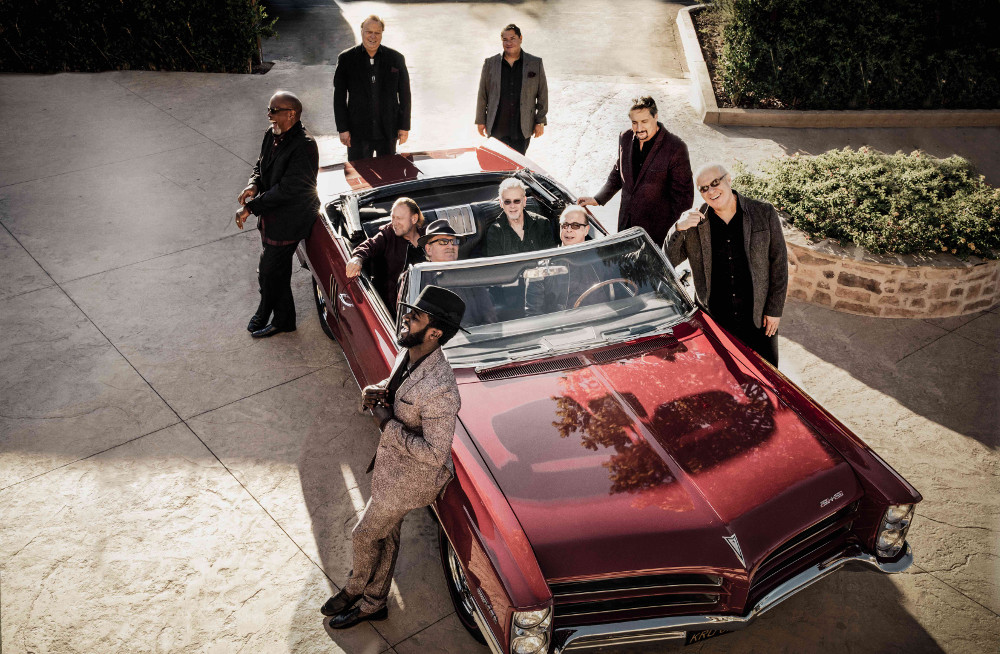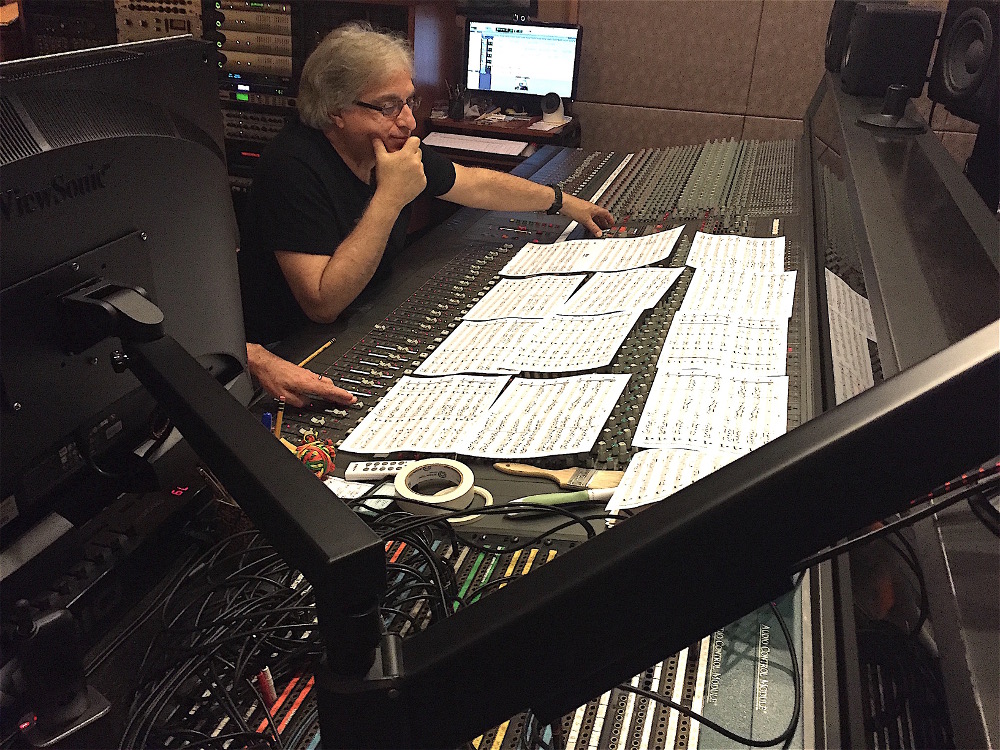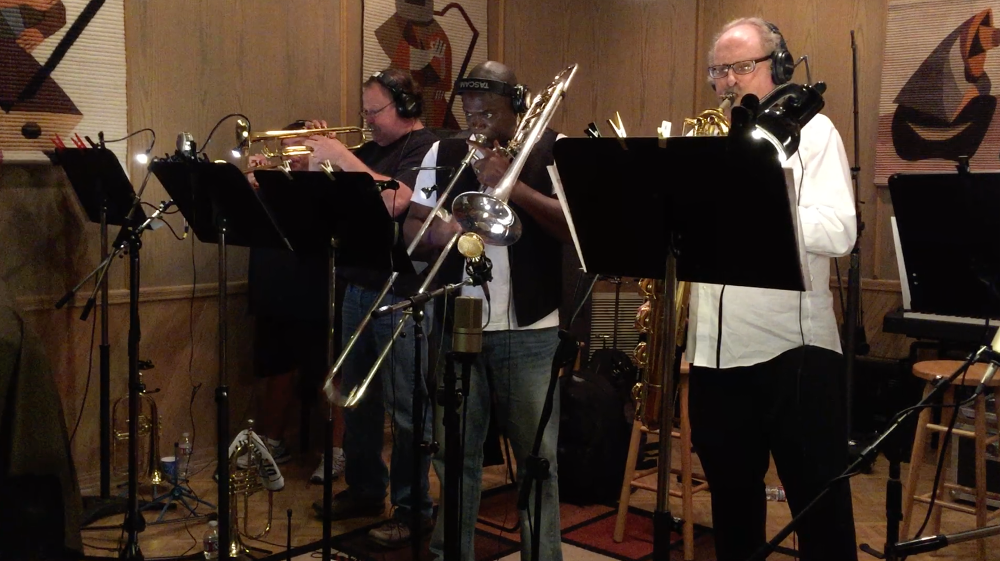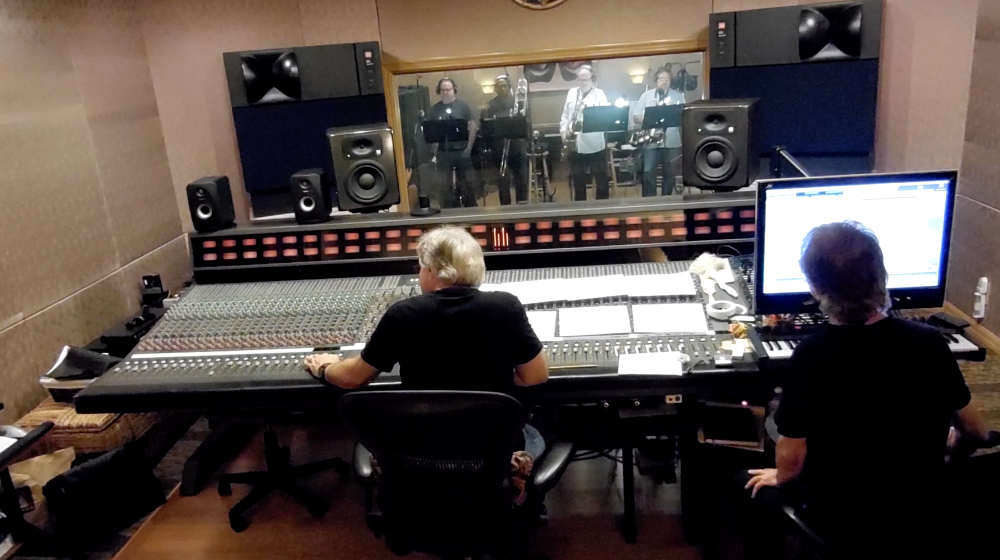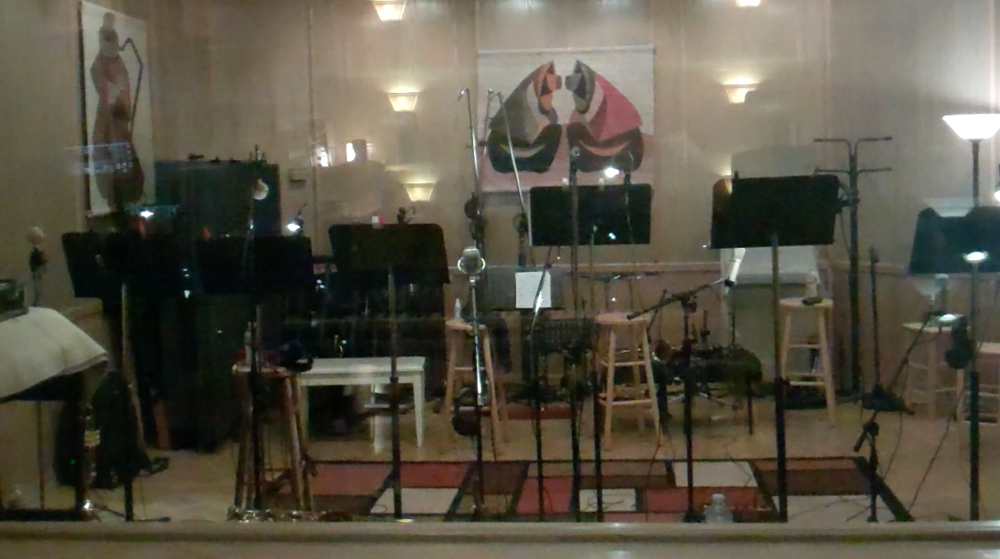Recording and Mixing the Tower of Power Horns: Elite Techniques with Producer Joe Vannelli
Is there anything that unites the universe like soul music?
With the power to transcend all races, religions and creeds, soul has a unique power. Classic soul’s hooks stem from many energy sources — the singers, guitarists, bassists and drummers have all played their parts in establishing classics.
But it’s those horns, if a group has got them, that lifts an elite soul band into the next dimension. And man does Tower of Power got ‘em. See these guys live, and the famed Tower of Power Horns are front and center, motivating the music with the same R&B drive as when the band was formed exactly five decades ago.
That 50th Anniversary milestone has not gone unnoticed by the group, which just dropped their infectious new record, Soul Side of Town. Veteran members Emilio Castillo (tenor sax), Stephen “Doc” Kupka (baritone sax), David Garibaldi (drums) and Francis Rocco Prestia (bass), were joined by guitarist Jerry Cortez, Hammond B3 organist/keyboardist Roger Smith, 1st tenor saxophonist Tom Politzer, trumpeters Adolfo Acosta and Sal Cracchiolo, plus singers Ray Greene (now in Santana) and Marcus Scott to record the 14 original tracks at Blue Moon Studio in the LA suburb of Agoura Hills.
Overseeing the tracking action, along with the mixing, was the highly experienced producer Joe Vannelli. A GRAMMY-winning production/engineering/keyboard master renowned for his work with brother Gino Vannelli, Joe was a smart choice for a band with top-tier expectations.
While all of the musical elements had to be handled expertly, Vannelli had to amp up his focus another notch for the Tower of Power Horns. A horn section that’s been hired out for literally hundreds of artists — Chaka Khan, Elton John, Billy Preston, John Lee Hooker, Rod Stewart, Lenny White, The Meters, Heart, Rick James, Santana, Smokey Robinson, Aerosmith, Phish, Neil Diamond, and P.Diddy to name just a few — Vannelli had to be on it for every grunt, growl and blast that went down.
When it comes to Tracking Best Practices for horns, it doesn’t get any bigger or better than Tower of Power. A true gentleman, Vannelli shares his veteran techniques for mic placement, selection, and mixing, plus when to simply engage your instincts.

Joe, recording Soul Side of Town was a special project right? This wasn’t just any studio session.
It was a real joy to work on a project like this, with a classic band like Tower of Power. With real players — not just real, but real competent players. Exceptional players. Doing real music and recording it in a quasi-traditional way. It was just a lot of fun, and very gratifying.
When you say quasi-traditional, can you tell me a little more about exactly what you mean by that?
I used Digital Performer, which is my DAW preference although I also use Pro Tools quite often.
We’re using a digital workstation to record classic music. The band is conventional but we’ve used modern methods to record it. I recorded it through a large Amek G-2520 analog 56-channel console with custom mic pres and all that stuff. I used the traditional method of recording it, but we recorded it to a digital workstation.
We recorded in segments. We recorded the rhythm section first. The horn arrangements had not been really completed, but we kind of had an idea of where we were going and we tracked it with drums, bass, guitar, and keyboards.
Actually, the project had gotten started without me. (Co-founder and tenor saxophonist) Emilio Castillo and the band had started recording up in Sacramento. They have a buddy up there named Chuck Hansen who has a studio called The Track Shack. They started cutting some tracks back in 2012 and 2013.
For some reason they found their way to my studio because they were in the LA area doing a gig and they needed to record some horns for an Italian artist. Emilio really liked the way the horns sounded and he said, “I think we’re going to do all our horns here at the studio.” Also David Garibaldi, the drummer, is a really close friend, he had worked with my brother Gino and myself doing sessions for us way back in the ‘80’s. He always liked working with us and thought that I would be a good fit with Tower of Power. He was in my corner trying to get me involved with the band for years.
We did some tracking, and Emilio liked what he was getting. We just continued tracking the rest of the material, and then he requested that all of the stuff that was recorded up in Sacramento be delivered to me to continue working on. That’s how it happened, in a haphazard way. Once they brought the first set of tracks to me, we continued recording the second half of the album. We worked on twenty-eight songs in all. There’s enough for two albums! There will be a follow up coming out in the near future.
“Capture That Energy”
Joe, how would you characterize the overall challenge of recording horns — when you know you’re going to record horns, what mindset do you get into?
Obviously we want to try to capture the energy that these guys deliver live. That’s the first thing. So you put your thinking cap on and go over how to place the microphones in the studio, and what mics to use? What effects and what kind of processing?
All of that. Plus we were always throwing our two cents in with regard to the arrangement. Sometimes, we were making changes on the fly. You’ve got to stay light on your toes when you’re doing this kind of project trying to capture that energy and capture the sonics of what they do live.
One of the big appealing things of Tower of Power is having (co-founder and baritone saxophonist) Doc do those low baritone scoops. It provides real counterbalance in the group. With the trumpets blaring up in the high register, and the saxes mid-register, then you’ve got that low baritone. The horn section really sounds outstanding to me. It’s one of the best horn sections I ever heard.
How did you set up the microphones to capture that?
I close mic’d all of the guys. I had them set up the way they naturally set up live. I did put room mics up, but I didn’t wind up using much of the room mics simply because we were recording a new album and the guys frankly hadn’t seen all of their parts. They actually received some of their parts the day we recorded the horns. So, they were sight-reading stuff.
Occasionally they’d miss something, right? So, we’d be dropping in little parts and sometimes everybody would be nailing it and maybe one guy would miss one part. Rather than have everybody re-do their parts together to capture the ensemble sound in the room mics, I would just punch in an individual part. For that reason, I couldn’t use much of the room mics. But, I added some artificial ambiance i.e. room sound to the horns, and some delays to give them more life.
Again, we’re starting a new album. It’s like uncharted territory. It’s not like listening to them play a tune they’ve played for the last forty years and got it nailed, a tune they could play in their sleep. There were some challenging parts on this album.
Can we drill down on to the types of mics you prefer to use?
On the trumpets I used ribbon mics. I used ribbon mics because if I used anything else, condensers for example, the trumpets would sound gnarly and obnoxious. I was looking to capture kind of a warm, rich, full sound. The ribbon mics I used on the horns were Cascade ribbon mics. They worked great!
I have a bunch of microphones and I just tried various microphones to see what would work. I had some FET mics and solid state mics. I use the FET mic on the baritone, that worked great, and some solid state condensers on the two tenors. This band uses two tenors, rather than an alto and a tenor — the mics worked well with just a little analog EQ dialed in on the console.
How about dynamics?
As far as compressors I used a variety of compressors. I have DBX 165’s, 166’s, 1176’s, LA4’s, Summit Audio leveling amplifiers, a Vocal Stresser. I used some of them in the recording process to control the dynamics somewhat, because horn dynamics can be over the top. We have to tame them a little, kind of control their peaks and overall dynamics.
When I mixed the horns I subgrouped them. I also added another overall McDSP plugin compressor on the subgroup, just to control them a little more. Because when mixing, you’ve got to fit all of it into the mix along with other instruments, vocals, solos, drums etc. So you’ve really got to try to help shape it. If something gets to be too dynamic it’s just not going to be pleasant to listen to. You’re going to be adjusting your playback level constantly. These are judgment calls you make when mixing.
How close do you put the mics to the various horns?
The mics were very close. I mean, (trumpeters) Adolfo Acosta and Sal Cracchiolo had their horns right up into the microphones. It worked quite well, considering they were all in the same room. It was very loud at times, it was almost unbearable! Even though we had to once in a while punch in a part here and there, I was always concerned about leakage, the leakage really became a non-issue. It was so minor, it wasn’t apparent at all.
How about those famed Tower of Power saxophones?
The mics were right up against the bell of the tenor saxes, although generally it depends on the instrument and player. When we finally mixed them we dialed in and out a little bit of EQ , but for the most part, they were pretty well flat.
When you talk about dialing in EQ, were you subtracting or adding? Or some of both?
Mostly subtracting, maybe adding a little top to the horn section. But mostly subtracting, especially saxophones — you know when they’re belting, they can get kind of nasal sounding. On some of the tracks I had to use a dynamic equalizer, like a Waves C4, just to ride the 2 khz to 3 kHz area, especially when they would be hitting it really hard. Of course, that would depend on the arrangement and on the tune.
Flexible (Sax) Strategies
What are some additional miking or mixing tips you have for horns?
I’m still kind of the old school. I don’t really try to quantify what I do. I like to listen to what I’m hearing and see if it sounds right. If it feels right. That’s kind of how I make my judgment calls.
It sounds like you’re saying when you’re tracking horns — among other instrument groups — that you’ve got to just get in the room and listen.
Right. Absolutely. I mean, you listen to the arrangement and see how the horns are laid out harmonically and what needs to be featured, so I’m always varying the blend. That’s another call that one has to make. There’s no fixed method. It’s variable. You use the basic techniques to get you started, then you use your own intuition to get it to the next stage.
Is there a particular song on this latest album where you especially like how the horns came out?
There are several. The horns on “Hanging with My Baby” are great. It’s a typical Tower Of Power syncopated feel, they’re never on a particular back beat or down beat, they hit these sixteenth note stabs outta nowhere, which is great. And “East Bay! All Day!” the opening instrumental, the horns are ridiculous on that. “Butter Fried” is good, as is the instrumental “After Hours.”
They’re all good! I have to give credit to Dave Eskridge who was the horn arranger here, for most of the album. He did an amazing job. Great, great job. And again, my hats off to the players…..they’re great players. I think the proof is right there in the pudding — it’s really amazing that these guys have been around for fifty years, and can still deliver like that. Many bands that have been around a while phone it in or are a facsimile of themselves. But after all these years, Tower of Power are really, really awesome live.
That leads to the last question I wanted to ask you, Joe. What is it about with Tower of Power’s horns that’s trademark to them – what do they do that no one else can do?
The first thing they have is the sound. It’s a unique sound that they have. The fact that they use two tenors in the midrange is unique, and the fact that they’ve got this baritone, Doc, doing this baritone thing on the bottom is really unique to their sound.
And that they’ve been playing for so long. They just gel together really well. It’s really a package. It doesn’t feel like you’ve got a bunch of studio guys that kind of know each other, but just play together occasionally. These guys are together. You can tell.
— David Weiss
Tower of Power are celebrating their 50th Anniversary with 100+ international tour dates through December. Visit here to see the full schedule.
Please note: When you buy products through links on this page, we may earn an affiliate commission.







